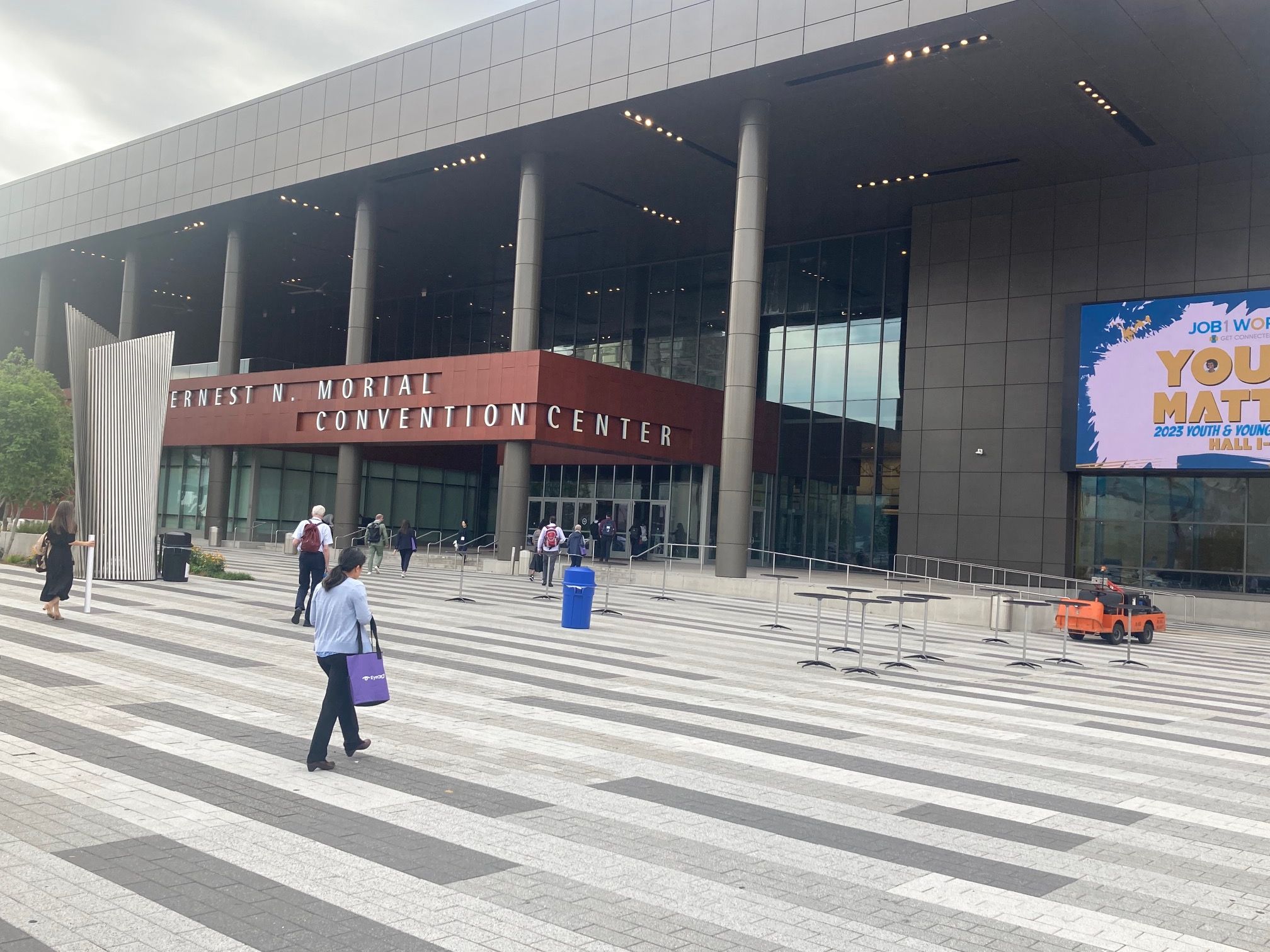Article
ARVO 2023: Ashvattha Therapeutics presents preclinical data on anti-VEGF nanomedicine D-4517.2
Author(s):
The company shared data at the Association for Research in Vision and Ophthalmology annual meeting in New Orleans that demonstrated that a single oral dose of D-4517.2 significantly reduced choroidal neovascularization lesions to a level comparable to D-4517.2 delivered subcutaneously and aflibercept administered intravitreally at the same mass dose in a laser-induced CNV mouse model.
The data were shared in an oral presentation and poster at the Association for Research in Vision and Ophthalmology (ARVO) annual meeting held this week at the ERnest N. Morial Convention Center in New Orleans. (Ophthalmology Times image)

Ashvattha Therapeutics this week announced two preclinical data sets demonstrating the efficacy of its anti-angiogenic precision nanomedicine, D-4517.2.
The data were shared in an oral presentation and poster at the Association for Research in Vision and Ophthalmology (ARVO) annual meeting held in New Orleans.
According to the company, D-4517.2 is a novel precision nanomedicine that inhibits neovascularization by targeting activated microglia and hypertrophic retinal pigment cells, cells responsible for the increased vascularization associated with neovascular age-related macular degeneration (wet AMD) and diabetic macular edema (DME).
“Patients suffering from wet AMD and DME often have to endure injections directly into the eye at a specialist’s office in order to find any relief,” said Jeff Cleland, CEO, co-founder, and chairman of Ashvattha.
Cleland also pointed out the data supports the development of an oral formulation of D-4517.2 as an alternative to injections while greatly reducing the treatment burden on patients.
“The preclinical data also builds on previous findings that demonstrate our precision nanomedicines selectively target regions of inflammation at a cellular level and cross biological barriers including the blood-retinal barrier,” he said.
Natacha Le Moan, Ph, Head of Translational Sciences at Ashvattha gave an oral presentation titled “Oral Formulation Development of the Anti-Angiogenesis Drug D-4517.2 to Treat Age-related Macular Degeneration (wet AMD) and Diabetic Macular Edema (DME)” in which she discussed the efficacy of the oral formulation of D-4517.2 in a mouse model of wet AMD.
Key highlights from presentation:
- Results indicated that a single subcutaneous dose of D-4517.2 (40 mg) significantly reduces CNV lesion area by~2-fold compared to vehicle control, which is consistent with previous observations and comparable with aflibercept efficacy.
- A single oral dose of D-4517.2 (40 mg) also significantly reduces CNV lesion area and vascular leakage by ~2-fold. A 200 mg oral dose further reduces the CNV lesion area by ~3.5 fold.
- These results suggest that oral administration of D-4517.2 has similar efficacy to aflibercept, and similar bioavailability when given orally or subcutaneously. This study supports the development of D-4517.2 as a potentially safe and effective oral agent for patients suffering from wet AMD or DME.
Elia Duh, a collaborator from Johns Hopkins University presented a poster titled “Suppression of subretinal neovascularization in Vldlr knockout mice by systemic administration of a targeted VEGF-receptor inhibitor,” in which he discussed the cellular localization and efficacy of D-4517.2 in a wet AMD mouse model.
Key highlights from poster presentation:
- The study evaluated the localization of D-4517.2 in Vldr -/- knockout mice, an animal model with symptoms of type III wet AMD after birth.
- Results indicated the nanomedicine conjugated with a fluorophore (D-Cy5) colocalized with activated microglia and macrophages within regions of ocular inflammation in Vldr-/- mice.
- Oral and subcutaneous administration of D-4517.2 significantly reduces the number of CNV lesions in Vldlr-/- mice suggesting a benefit of selectively inhibiting VEGFR in activated microglia/macrophages and RPE cells in the retina and choroid. The data further support that systemic administration of D-4517.2 is effective in reducing neovascular lesions associated with AMD and selectively targets activated microglia and macrophages.
Newsletter
Don’t miss out—get Ophthalmology Times updates on the latest clinical advancements and expert interviews, straight to your inbox.




